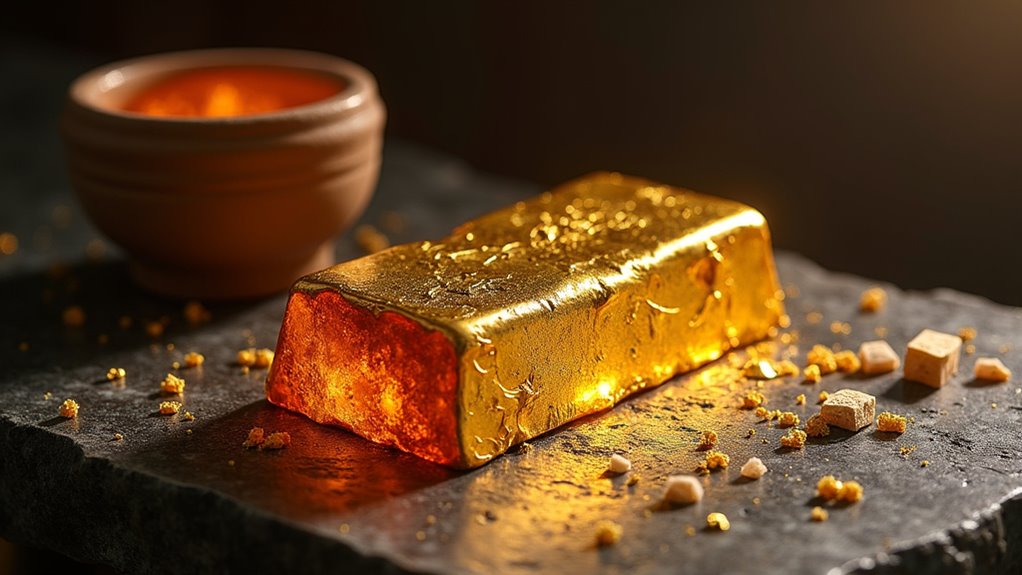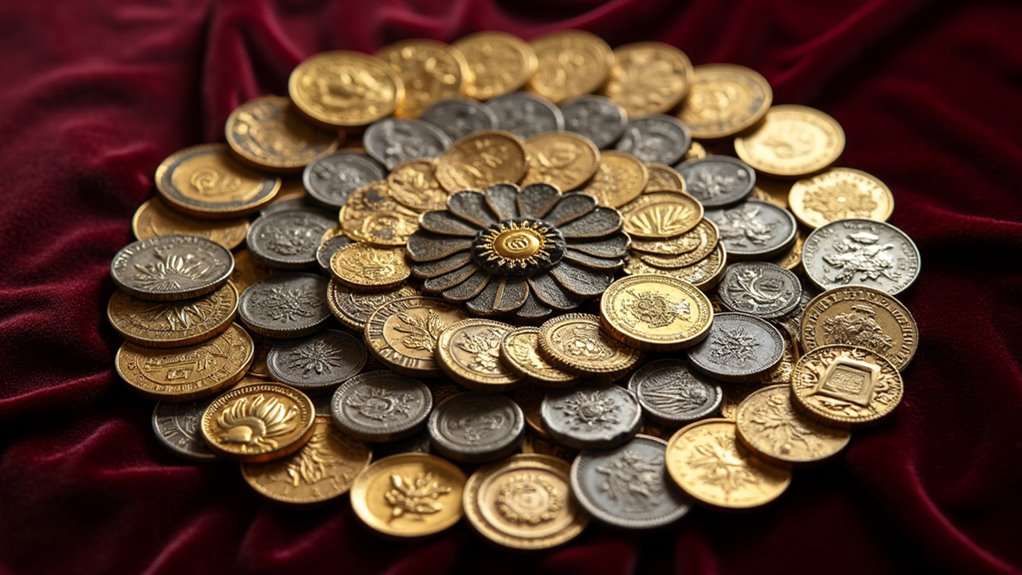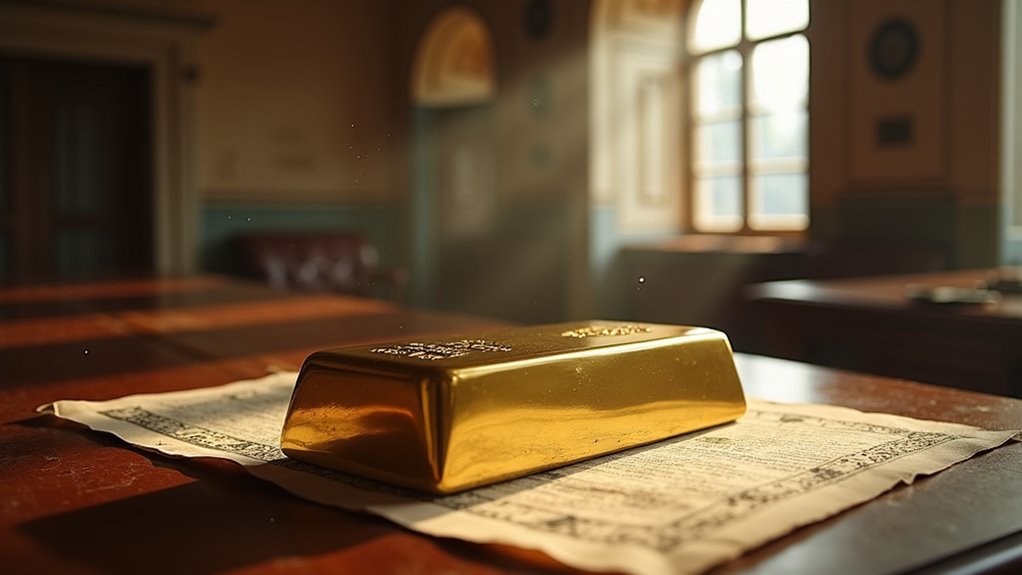Gold filled jewellery refining involves several precise steps, whether conducted at home or professionally. The process begins with thorough sorting and cleaning, followed by incineration to remove impurities. A nitric acid bath dissolves base metals, leaving behind precious gold particles. While DIY methods exist, professional refiners offer advanced techniques, superior equipment and higher yields. The complexity of safe chemical handling and specialist knowledge makes professional services an attractive option for ideal results. There’s much more to discover about maximising returns from your gold filled pieces.

Every year, countless pieces of gold filled jewellery make their way to refineries as owners seek to extract the precious metal from these composite items. Gold filled items, distinct from solid gold pieces, consist of a base metal core bonded with a substantial layer of gold through heat and pressure. These pieces must contain at least 5% gold by weight to be legally classified as gold filled, often indicated by markings such as “1/20 14K GF” on the jewellery.
Gold filled jewellery combines precious metal with base materials, creating valuable pieces marked by specific ratios like 1/20 14K GF.
The refining process begins with thorough preparation of the materials. Jewellery pieces need careful sorting by karat and type, followed by meticulous cleaning to remove surface contaminants and non-metal components like stones or clasps. Accurate weighing using digital scales is essential for calculating the chemical quantities needed in the refining process.
The first major step involves incineration, where the gold filled materials are heated in a heat-resistant container to burn away impurities and expose base metals. This process requires proper ventilation and safety measures, as it produces potentially harmful fumes. Once cooled, the incinerated material undergoes inspection to remove any remaining non-metallic residue. Proper safety precautions are crucial, including the use of personal protective equipment to minimize risks during this phase. This initial step is vital for ensuring the success of subsequent processes, particularly when aiming for ultra-pure gold extraction. Additionally, improper handling of materials can lead to significant ecosystem disruption, as seen in mining practices.
Following incineration, the material enters a nitric acid bath phase. This necessary step dissolves the base metals, requiring approximately 3 millilitres of diluted nitric acid per gram of material. The reaction produces both fumes and liquid waste, necessitating careful handling and proper safety equipment. The resulting solution is filtered to collect undissolved gold particles, which are then thoroughly rinsed with distilled water.
The final extraction phase involves combining the remaining gold with flux, typically borax, to facilitate melting and further purification. When heated in a crucible, the mixture becomes molten, allowing impurities to separate. The purified gold is then poured into moulds to cool and solidify, after which it can be weighed to determine the yield and tested for purity. Using borax for gold refining helps minimize environmental impact compared to more traditional methods.
While home refining is possible, professional refining services offer significant advantages. These specialists employ advanced techniques like inquartation and utilize sophisticated equipment for more precise extraction. Professional refiners typically provide quick turnaround times and offer compensation based on current market values, making them an attractive option for those seeking maximum returns from their gold filled items.
The choice between DIY refining and professional services ultimately depends on factors such as quantity of material, desired purity levels, and technical expertise. Professional refiners generally achieve higher purity levels and minimise gold loss compared to home methods, though they charge fees for their services.
For most individuals, the convenience and reliability of professional refining services make them the preferred choice for processing gold filled jewellery.
Frequently Asked Questions
What Safety Equipment Do I Need Before Starting the Gold Refining Process?
Essential safety equipment for gold refining includes heavy-duty chemical-resistant gloves, protective goggles, flame-resistant aprons, and closed-toe footwear.
A properly fitted respirator is vital to prevent toxic fume inhalation.
The workspace must be equipped with adequate ventilation, preferably a fume hood, and Class D fire extinguishers nearby.
Spill containment kits and first-aid supplies should be readily accessible for emergency situations.
How Much Gold Can I Expect to Recover From Gold-Filled Jewelry?
Gold-filled jewellery typically yields 2-3% of its total weight in pure gold.
For example, 100 grams of gold-filled scrap should produce approximately 2-3 grams of refined gold.
However, actual yields vary based on several factors, including the karat rating, surface wear, and presence of non-gold components.
Heavily worn pieces or those with significant damage may yield considerably less, while well-preserved items marked as 1/20 14K could deliver slightly better returns.
Can I Mix Different Types of Gold-Filled Items During Refining?
Mixing different types of gold-filled items during refining isn’t recommended.
Varying base metals and gold contents can cause unpredictable chemical reactions, potentially reducing recovery rates and creating processing complications.
Professional refiners typically separate items by composition to maximise yields and guarantee consistent results.
For ideal outcomes, it’s best to sort gold-filled pieces by their base metal content and karatage before beginning the refining process.
How Long Does the Entire Refining Process Typically Take?
The complete gold refining process typically takes between 5-12 hours for small-scale operations.
This timeline includes incineration (1-3 hours), chemical dissolution (2-5 hours), precipitation (1-3 hours), and final melting (1-2 hours).
However, professional refineries handling larger batches may require several days to process materials thoroughly.
Factors like batch size, equipment sophistication, and material composition significantly influence the overall duration.
What Are the Legal Requirements for Refining Gold at Home?
Home gold refining requires strict compliance with several legal requirements. Refiners must obtain appropriate licencing and permits, particularly when handling hazardous chemicals or processing large quantities.
Anti-money laundering (AML) and Know Your Customer (KYC) regulations apply to selling refined gold. Proper documentation of transactions, source materials, and disposal methods is mandatory.
Environmental protection laws and workplace safety standards must also be followed, while tax obligations need careful consideration.














